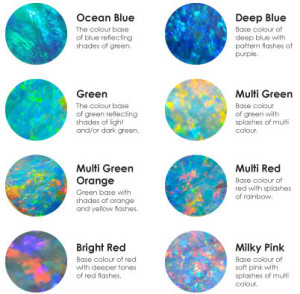The word Opal is from the Greek word Opallos meaning “to see a change of colours.” Opal is a formation of non-silica gel. Millions of years ago, this gel seeped into crevices and cracks in the sedimentary strata.
An important early description of opal is that of Caius Plinius Secundus, better known as Pliny the Elder, who lived in the first century A.D. Pliny wrote an extensive treatise entitled, in English, Natural History. He describes opal as being:
“the most highly prized and valuable of all gemstones in the Empire”. Pliny wrote that price was set “according to the decree generally set down and pronounced by our nice and costly dames”!
Pliny’s appreciation for opal is captured in the following text:
“For in them you shall see the living fire of ruby, the glorious purple of the amethyst, the sea-green of the emerald, all glittering together in an incredible mixture of light”. (Pliny Ist from this era are thought to have come from Cernowitz, a mountainous region in what was at that time Hungary , but now Slovakia . However early Romans believed the source was India , an incorrect belief promoted by traders in order to protect their interests.
Pliny the Elder wrote the first Natural History of the World in the first century AD. In this most important publication he wrote that Opal
Through time and through nature’s heating and moulding processes, the gel hardened and today can be found in the form of Opal. Opal is set apart from other gemstones because of it’s characteristic appearance, displaying sparkling prismatic colours, which change and flash when you turn the stone.
The 7 common patterns of Opal
1 – Pin fire
2 – Flash fire
3 – Broad flash fire
4 – Rolling flash
6 – Harlequin
7 – Rare Pattern
8 – Picture stone (like a flower or a scene within the stone)


Recent Comments